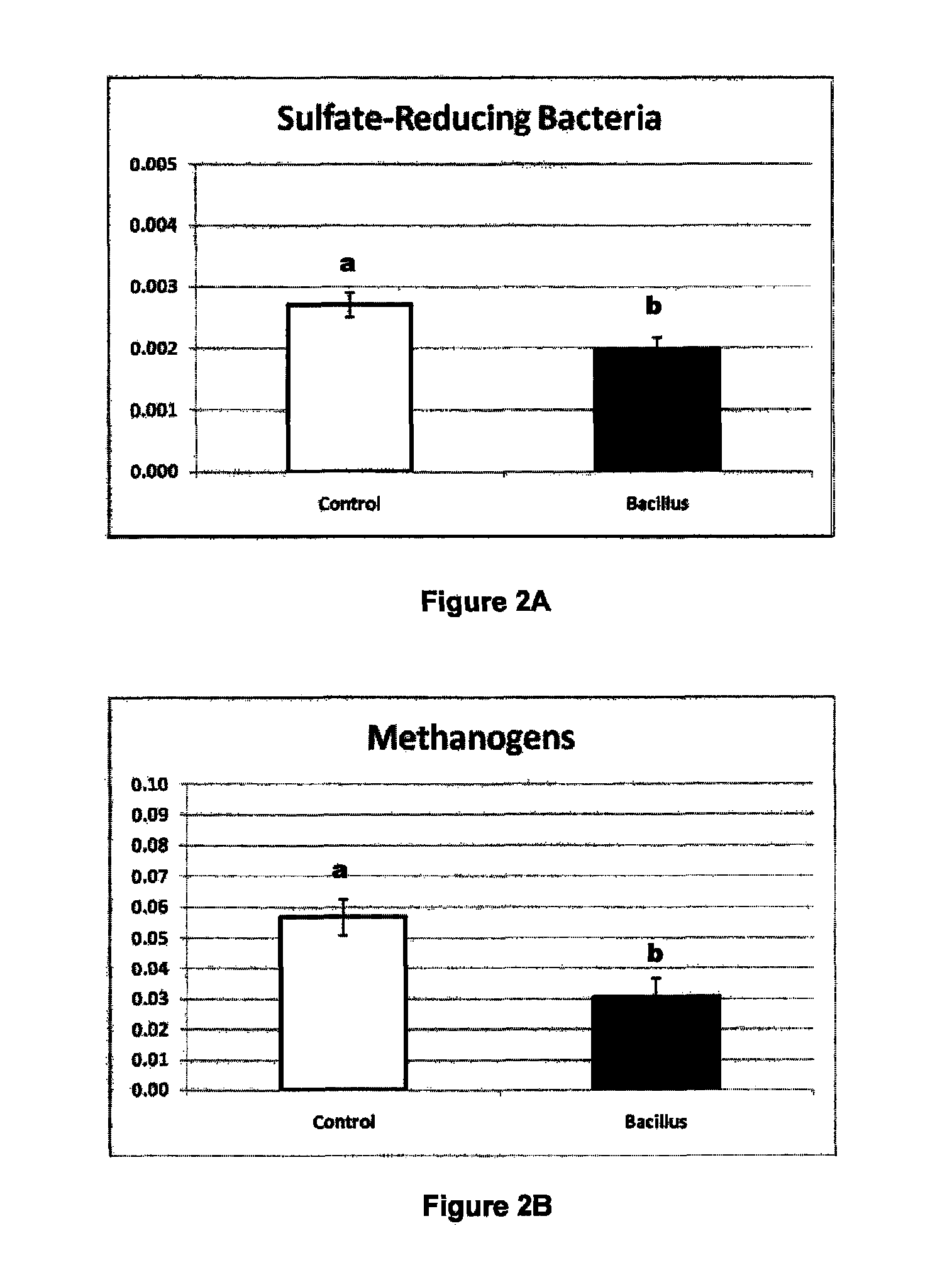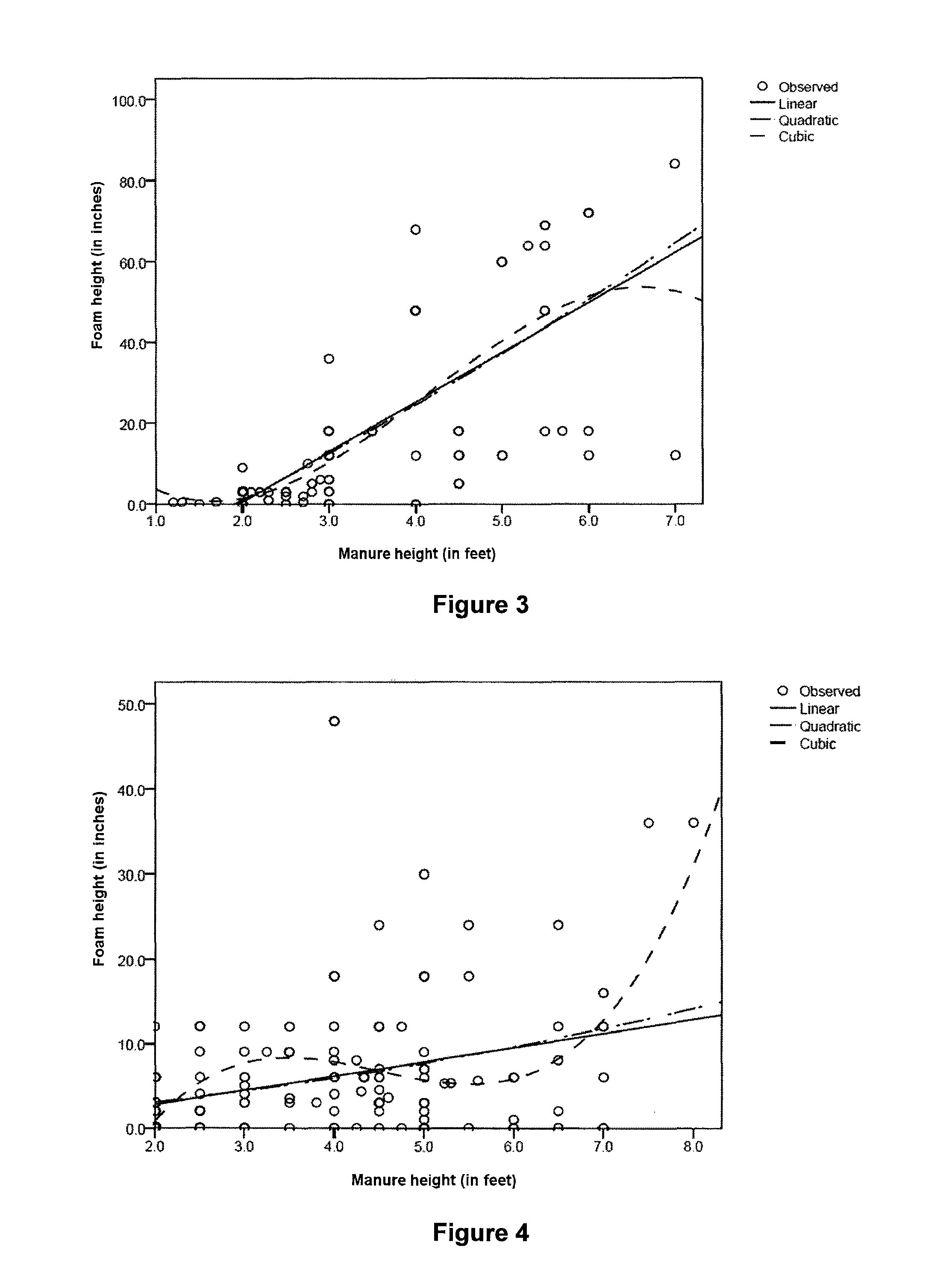Methods of controlling pit foam
a technology of foam and pit, applied in the field of methods for controlling foam, can solve the problems of hydrogen sulfide gas, gaseous compound emission, system often presenting a challenge to the proper function,
- Summary
- Abstract
- Description
- Claims
- Application Information
AI Technical Summary
Benefits of technology
Problems solved by technology
Method used
Image
Examples
example 1
Differences in Fecal Nutrient Output Between Pigs Fed Dried Distillers Grains with Solubles (DDGS) Compared to Pigs Fed Standard Corn-Soybean Meal-Based Diets
[0043]Diets formulated with regular DDGS or high-protein DDGS were compared to corn-soybean meal-based diets typically fed in the swine industry to growing-finishing pigs in a large, integrated commercial swine system. The two types of DDGS were included in the diets at a 30% inclusion level and all diets were formulated to meet similar nutrient specifications. Fecal samples were obtained from pigs in two DDGS feeding trials evaluating the inclusion of regular DDGS and high-protein DDGS. In both trials, animals were housed in pens with twenty-five (25) pigs per pen. Pigs in three pens each representing the control and regular DDGS diets (six total pens) were sampled for nutrient analyses in the first study, whereas five pens each were sampled representing the control and high-protein DDGS in a separate experiment. Three (3) ind...
example 2
Differences in Nutrient Composition of Swine Manure Samples Between Foaming and Non-Foaming Deep Pit Storage Systems
[0048]Manure samples from deep pit storage systems with and without foam were collected at various sites from three production systems and the nutrient composition of these samples was assessed. Manure samples were obtained by sampling the entire depth of the manure storage pit with a 6′-long PVC sampling rod and classified as having none, low, or high levels of foam and were defined as follows: None=less than 1.0 inches of foam on the manure surface (n=30), Low=1.0 to 6.0 inches of foam on the manure surface (n=25), and High=greater than 6.0 inches of foam on the manure surface (n=14). Manure samples obtained from deep-pit storage systems with a high degree of foaming had greater (P<0.05) concentrations of fiber-bound protein (ADFProtein) compared to manure samples from non-foaming pits and those with a low degree of foam (Table 3). The concentration of ADFProtein in ...
example 3
Differences in Nutrient Composition Between Liquid Manure and Foam Samples from Foaming Swine Deep Pit Manure Systems
[0050]Samples were obtained representing the liquid portion and the foam on top of three deep-pit swine manure storage systems experiencing foaming and nutrient analyses were performed. The concentration of crude fat was higher (P<0.05) in foam samples compared to samples of the liquid portion of the deep-pit manure storage system, as were concentrations of copper, iron, and zinc (Table 4). These data suggest that lipid content of the deep-pit manure system may have a role in foam formation on the surface of swine manure pits, similar to its role as a water-surface interface for nutrient acquisition by filamentous bacteria associated with foaming in municipal wastewater treatment plants. Furthermore, the high presence of minerals in the foam that would normally be concentrated in the solids component at the bottom of the pit indicates an inversion of the solids profil...
PUM
 Login to View More
Login to View More Abstract
Description
Claims
Application Information
 Login to View More
Login to View More - R&D
- Intellectual Property
- Life Sciences
- Materials
- Tech Scout
- Unparalleled Data Quality
- Higher Quality Content
- 60% Fewer Hallucinations
Browse by: Latest US Patents, China's latest patents, Technical Efficacy Thesaurus, Application Domain, Technology Topic, Popular Technical Reports.
© 2025 PatSnap. All rights reserved.Legal|Privacy policy|Modern Slavery Act Transparency Statement|Sitemap|About US| Contact US: help@patsnap.com



